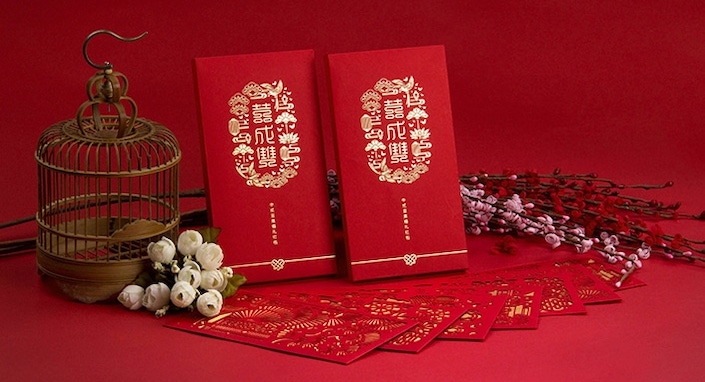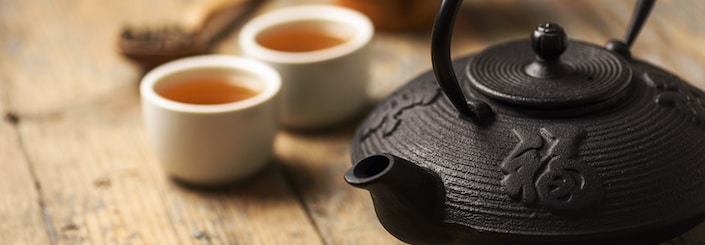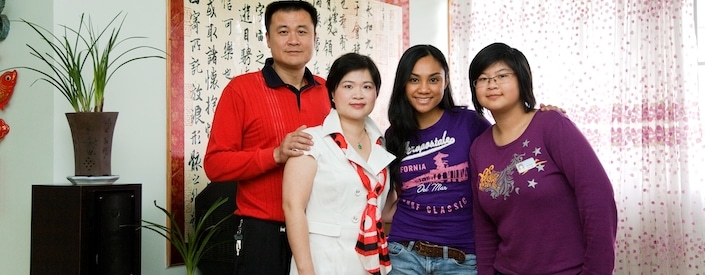
从古至今,中国一直是一个礼仪之国。因此,在给朋友或家人送礼物时也需要礼仪。如果你对中国的送礼文化不够熟悉,那么本来你已经挑选好的礼物反而会让你或者收礼的人感到不舒服。那么在挑选礼物的时候,有什么讲究呢?
首先,在购买礼物前,你需要考虑几个因素。第一,因为中国人很重视面子,买价格合适的礼物,你要确定花的钱不会让你或者收礼的人感觉尴尬或者有压力。第二,买收礼人喜欢或者需要的礼物,确定你买的礼物是有用的。第三,买礼物时避免买一些人们认为不吉利的东西,比如钟,伞,梨。因为“送钟”的发音和“送终”(参加葬礼)一样;“伞”的发音和散(分手)一样,“梨”的发音和离(离开)一样。
其次,我们在挑选礼物的时候,需要了解一些常见的礼物。第一,新鲜的水果和花。水果和鲜花是很受欢迎的礼物,适合大部分的场合。第二,包装漂亮的茶。因为茶既有历史价值又有文化价值,而且喝茶对身体好,特别适合送给有地位的人。第三,红包。特别是在春节,在婚礼或者生日上。中国人认为6,8,和9 是吉利的数字,4是不吉利的,因为4的发音听起来像”死“,所以在他们的红包里常常带有6、8和9的数字,比如:600,666,888,999等等,没有4这个数字。第四,植物。如果你的朋友进新房或者常常在办公室工作,植物是不错的选择。
最后,在颜色选择上,你需要谨慎一些。对于喜事,中国人喜欢用红色,红色代表高兴,幸福或者好运。对于白事,常用白色或黑色,这两种颜色代表怀念,尊重,严肃。
如果你要给中国人买礼物,那么以上需要注意的因素你可以作为参考。总的来说,不管你要送什么,心意便是最重要的。
至今 (zhìjīn) is an adverb used to indicate that something has occurred consistently from a past time period continually all the way into the present.
Remember, an adverb is a word or phrase that modifies or describes an adjective, verb, or another adverb.
Although there are other ways to use this grammar construction, this passage contains an example of (zhìjīn) as it belongs to the second half of a four-character structure:
从 (cóng; from) + 古 (gǔ; ancient) + until now 至今 (zhìjīn)
Note that in the above four-character structure, the second character 古 (gǔ; ancient) can be replaced with another time phrase. However, 从 (cóng) and 至今 (zhìjīn) cannot be replaced. When used here, 至今 indicates that something beginning during a specified past time frame continues to occur until now.
至今 (zhìjīn) is often, but not always, placed at the beginning of a sentence or clause to introduce a time setting, which is then followed by the predicate.
从古至今,中国一直是一个礼仪之国。
Cónggǔzhìjīn, Zhōngguó yīzhí shì yīgè lǐyízhīguó.
Ever since ancient times, Chinese culture has emphasized the importance of social conventions.
By using 至今 (zhìjīn) in this sentence, the author emphasizes that social conventions have been important in China since ancient times and remain significant today.
Let’s look at another example:
我们在网上聊天过了好多年,可是至今我还没见到他人。
Wǒmen zài wǎngshàng liáotiān guò le hǎo duō nián, kěshì zhìjīn wǒ hái méi jiàn dào tā rén.
We’ve been chatting online for many years but until this day I still haven’t seen him in person.
Here, 至今(zhìjīn) is used after the sentence’s introductory clause to modify the second clause. After stating that s/he has talked with “him” online for many years, the speaker uses 至今 (zhìjīn) to emphasize that, until this day, she still hasn’t met him in person.
反而 (fǎn’ér) is a conjunction used to indicate a denial of what has first been stated by claiming that the opposite, or something contrasting, is in fact the case.
Remember, a conjunction is used to bridge two clauses or sentences.
Frequently, 反而 (fǎn’ér) is used to indicate a shift in thought occurring in the middle of a sentence. When this is the case, the following structure is used:
Clause + 反而 (fǎn’ér) + Opposing Clause
Let’s look at an example:
如果你对中国的送礼文化不够熟悉,那么本来你已经挑选好的礼物反而会让你或者收礼的人感到不舒服。
Rúguǒ nǐ duì Zhōngguó de sònglǐ wénhuà bùgòu shúxī, nàme běnlái nǐ yǐjīng tiāoxuǎn hǎo de lǐwù fǎn’ér huì ràng nǐ huòzhě shōulǐ de réng gǎndào bù shūfu.
If you’re not familiar enough with traditional Chinese gifting customs, the present that you choose could end up making you, or the recipient, feel uncomfortable.
In this sentence, 反而 (fǎn’ér) indicates a shift between two clauses that represent two opposing ideas. By using 反而 (fǎn’ér), the author indicates that if you don’t understand Chinese gift giving customs well enough, the gift you chose because you thought it would be well received will, on the contrary, embarrass you or offend the recipient.
Let’s look at another example:
大城市的生活虽然很精彩,但一辈子生活在农村的父母反而会不适应。
Dàchéngshì de shēnghuó suīrán hěn jīngcǎi, dàn yī bèizǐ shēnghuó zài nóngcūn de fùmǔ fǎn’ér huì bù shìyìng.
Although life in the big city is wonderful, for parents who have spent their whole lives in the countryside, it can actually be a difficult adjustment.
便 (biàn) is an adverb placed before a predicate to add emphasis or reinforce the sequence of two sequential actions. It is the formal, literary equivalent of the commonly used colloquial phrase “就” (jiù).
When 便 (biàn) is paired with是 (shì), it can be used to indicate that something is exactly or just as described.
Noun + 便 (biàn) + 是 + Adjective
For example:
总的来说,不管你要送什么,心意便是最重要的。
Zǒng de lái shuō, bùguǎn nǐ yào sòng shénme, xīnyì biàn shì zuì zhòngyào de.
In general, no matter what kind of gift you give, it’s the thought that counts.
In this sentence, 便 (biàn) helps to emphasize that good intentions are the most important when it comes to giving gifts.
便 (biàn) is also used to emphasize that one action happens right after, or as a result, of the preceding action, like in the following examples:
楼上新买了一架钢琴,我们家便多了一些不安静。
Lóu shàng xīn mǎile yī jià gāngqín, wǒmen jiā biàn duōle yīxiē bù ānjìng.
A new piano was purchased upstairs and now our house is much less peaceful.
很多时候,仅仅是换一种心情,换一个角度,便可以从困境中走出来。
Hěnduō shíhòu, jǐnjǐn shì huàn yī zhǒng xīnqíng, huàn yīgè jiǎodù, biàn kěyǐ cóng kùnjìng zhōng zǒu chūlái.
Oftentimes, all you have to do is change up your attitude and perspective, then you’ll be able to deal with your problems.
从古至今,中国一直是一个礼仪之国。因此,在给朋友或家人送礼物时也需要礼仪。如果你对中国的送礼文化不够熟悉,那么本来你已经挑选好的礼物反而会让你或者收礼的人感到不舒服。那么在挑选礼物的时候,有什么讲究呢?
首先,在购买礼物前,你需要考虑几个因素。第一,因为中国人很重视面子,买价格合适的礼物,你要确定花的钱不会让你或者收礼的人感觉尴尬或者有压力。第二,买收礼人喜欢或者需要的礼物,确定你买的礼物是有用的。第三,买礼物时避免买一些人们认为不吉利的东西,比如钟,伞,梨。因为“送钟”的发音和“送终”(参加葬礼)一样;“伞”的发音和散(分手)一样,“梨”的发音和离(离开)一样。
其次,我们在挑选礼物的时候,需要了解一些常见的礼物。第一,新鲜的水果和花。水果和鲜花是很受欢迎的礼物,适合大部分的场合。第二,包装漂亮的茶。因为茶既有历史价值又有文化价值,而且喝茶对身体好,特别适合送给有地位的人。第三,红包。特别是在春节,在婚礼或者生日上。中国人认为6,8,和9 是吉利的数字,4是不吉利的,因为4的发音听起来像”死“,所以在他们的红包里常常带有6、8和9的数字,比如:600,666,888,999等等,没有4这个数字。第四,植物。如果你的朋友进新房或者常常在办公室工作,植物是不错的选择。
最后,在颜色选择上,你需要谨慎一些。对于喜事,中国人喜欢用红色,红色代表高兴,幸福或者好运。对于白事,常用白色或黑色,这两种颜色代表怀念,尊重,严肃。
如果你要给中国人买礼物,那么以上需要注意的因素你可以作为参考。总的来说,不管你要送什么,心意便是最重要的。
 HSK 1 | My Dad Loves Drinking Tea
HSK 1 | My Dad Loves Drinking Tea
 HSK 1 | My Family's Dog
HSK 1 | My Family's Dog
 HSK 2 | My Bus Driver, Mr. Liu
HSK 2 | My Bus Driver, Mr. Liu
 HSK 2 | My Chinese Homestay Family
HSK 2 | My Chinese Homestay Family
